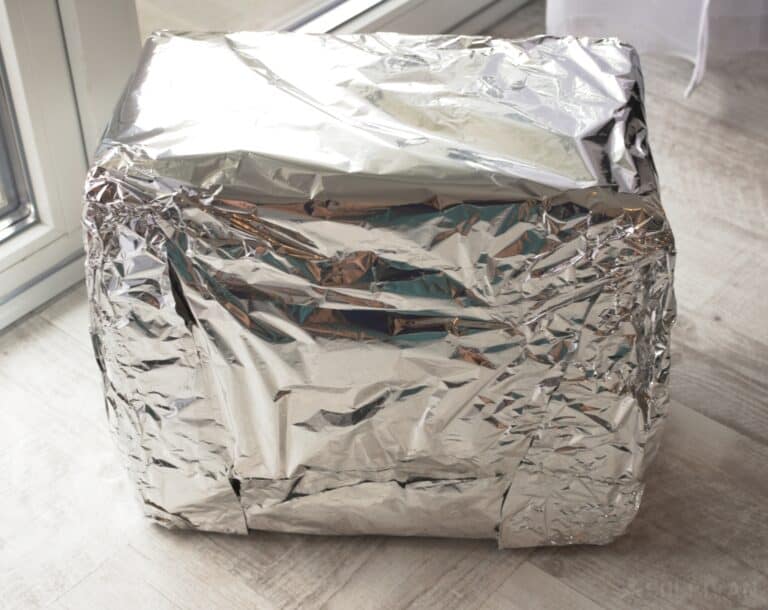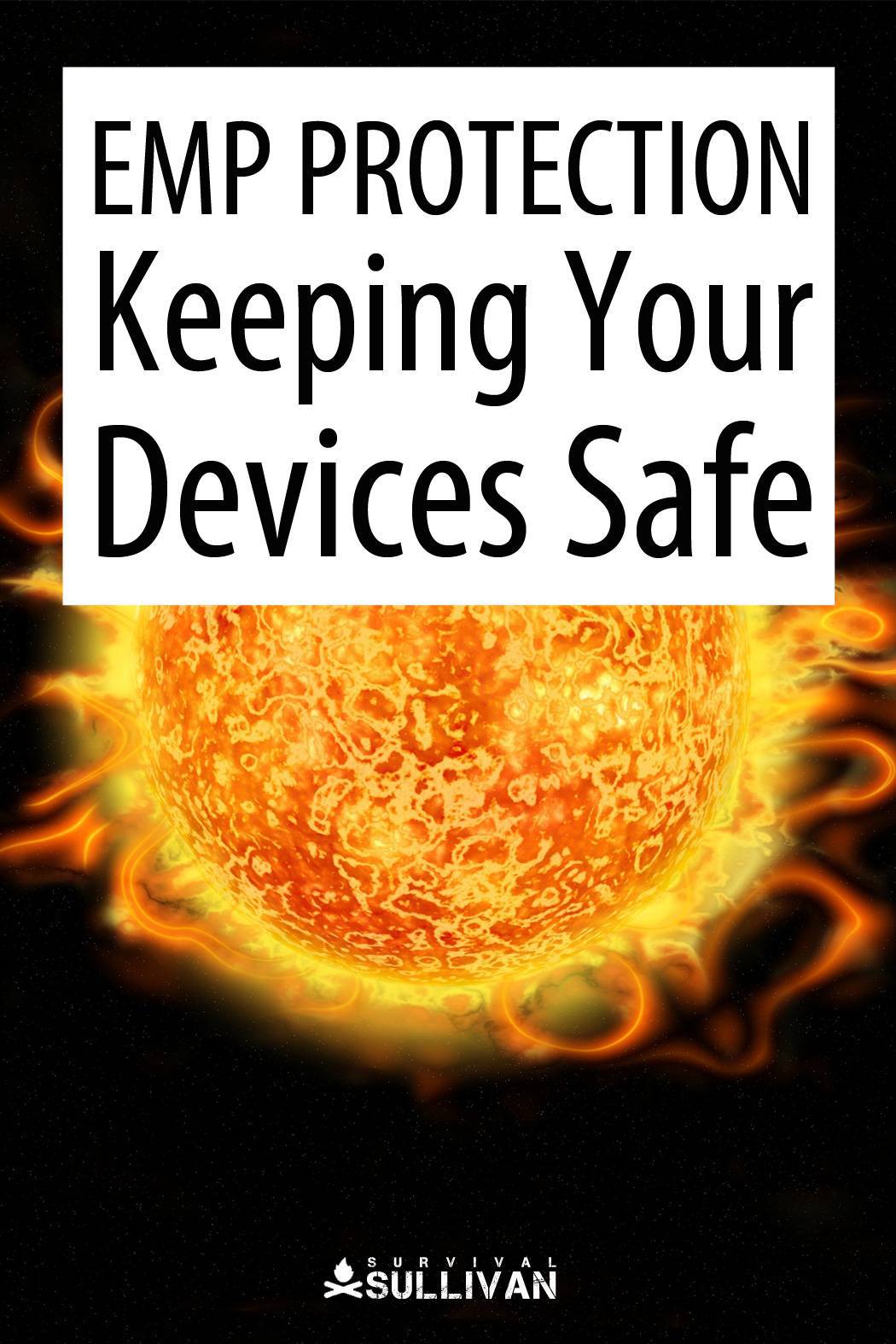An EMP attack is potentially one of the most severe, paradigm shifting threats facing the modern world today, especially advanced nations like the United States and much of Europe.
In an instant, an EMP could effectively plunge us back to an industrial or pre-industrial level of technology, damaging or destroying wholesale our electrical grid, and any technology that utilizes a circuit board.

It is genuinely difficult to even countenance the pandemonium that will result from such an occurrence.
Even though EMPs are increasingly resident in the public consciousness thanks to portrayals in popular media and fiction, the phenomenon that is an EMP is anything but make believe.
Resulting from cosmic events and man-made weapons alike, the threat of an EMP isn’t going anywhere anytime soon.
If you are like most people, you are increasingly reliant on electricity and modern technology. If you aren’t prepared to protect your tools and gear from destruction caused by an EMP you can kiss those advantages goodbye.
In this article we will be discussing EMP protection, and how to keep all of your gadgets, devices, tools and vehicles safe.
What is an EMP?
If you are unfamiliar with the term EMP, it stands for “electromagnetic pulse”, and it is quite literally a brief but impressively powerful disturbance of electromagnetic energy.
It may be conducted or radiated, but whatever form it actually takes a powerful EMP can disable and more likely damage or outright destroy electronic equipment.
EMPs may be created by a variety of sources. Naturally, they are most commonly encountered accompanying a lightning strike though the disruption they cause is quite localized compared to the greater threats we will discuss.
Another natural variation that has already occurred before historically in the 20th and 19th centuries is that caused by a solar storm, more properly a coronal mass ejection.
A massive burst of plasma and attendant magnetic field erupts from the sun and enters the solar winds. If it intersects Earth, entire hemispheres may feel the effects.
EMPs can also have an explosive origin. Meteors that enter or skim Earth’s atmosphere and break up may result in a potent discharge of electric energy.
Perhaps most devastating of all, ferociously powerful EMPs are generated upon the detonation of a nuclear warhead, and the effect is amplified if the warhead is deliberately detonated in the high atmosphere, blanketing the surface below out to the horizon with the attendant effect.
Advanced nations also possess specially designed non-nuclear EMP weapons which can generate a similarly powerful field without the titanic nuclear kaboom.
Effects of an EMP
Although we preppers think of an EMP as a regionally or even globally destructive event, we all experience EMP “events” on a small scale basically every day.
Weak EMPs can interfere with radios, cell phones and other common consumer electronics, disrupting audio and visual signals. Powerful EMPs are an entirely different beast, and genuinely worthy of the fear they generate in society.
A powerful EMP will directly create high voltage currents in the affected electronics, perhaps only disrupting it if you are lucky or if the device is designed to withstand an EMP, but more likely damaging it.
The most powerful EMPs will cause sparking, start fires, easily obliterate electronic storage media and completely burn out current carrying components in the affected devices.
Even non-electrical components may be protected if they do not have some form of specialty EMP or equivalent lightning protection designed into them.
In the event of a nuclear or massive solar EMP, much of society will simply turn off and it won’t come back on. Your computer, cell phone, radios, modern vehicles, power plants, all of it- toast, quite literally.
Defending against an EMP is typically a matter of shielding the vulnerable items from this intense bombardment of energy.
Protecting Small Devices and Equipment from EMP: The Faraday Cage
For protecting personal devices and small to medium sized electronic appliances, a Faraday cage may be used.
A Faraday cage, sometimes called a Faraday shield, is nothing more than an enclosure design to block electromagnetic fields, precisely what an electromagnetic pulse is.
At its simplest, the Faraday cage is simply a continuous covering or enclosure made out of some conductive material, most commonly taking the form of a very fine mesh.
Faraday cages have been in use for some time, first being invented in 1836. Today, they are used to protect sensitive electronics or create environments that are safe from interference. In certain applications they even protect people doing dangerous jobs around high energy radiation.

They are available to consumers today as a variety of containers or bags designed for the purpose that will allow someone to place vulnerable electronics inside and, hopefully, shield them from the damaging effects of EMP.
It is also possible to improvise a Faraday cage using any conductive material such as a galvanized metal trash can, or aluminum foil, although the efficacy of such measures varies.
For improvised and purpose designed products alike the issue of performance under particularly high energy EMP bombardment is questionable.
Shielding ability is typically measured in decibels, or dB. A higher rating is better, but just like the decibel rating for hearing protection or sound suppression the scale is logarithmic, not linear.
A low-performance Faraday cage of 10 DB will only reduce the EMP strength by a factor of three, probably not enough to meaningfully protect sensitive electronics.
Generally, there is precious little private sector testing that has been performed on the performance or efficacy of Faraday shielding for consumer electronics of any kind, and though it is becoming an increasingly crowded market sector, it is all but certain that cheaper products will not provide an adequate level of protection.
You should strive to purchase the best model you can and as always, buyer beware!
Shielding Larger Equipment: Conductive Tarps
Shielding larger equipment from the harmful effects of EMP is a more complicated proposition. Virtually every modern vehicle manufactured in the past several decades will be vulnerable, as will large radio installations, generators and other similarly heavy or bulky pieces of equipment.
For those who have the means and the technical expertise or access to such technical expertise, a large Faraday cage enclosure can be constructed as a room to store said equipment in or a partition around or within an existing structure.
If this is not an option, either due to size or cost constraints, one will have to rely on conductive tarps. A conductive tarp is exactly what it says on the label, a cloth or other similar material that is made from or thoroughly embedded with material that will conduct electromagnetic energy.
Although theoretically effective and proven as such under modest loads, the effectiveness of these items is in doubt for the highest energy EMPs. Nonetheless, it could be this or nothing for some applications.
A good conductive tarp will be easy to handle and ideally resistant to corrosion while containing neither silver or nickel, and the primary conductive component should be sandwiched between non-conductive outer layers.
In use, the conductive tarp should be laid over or wrapped around the item to be protected with the free edges allowed to touch the ground.
If appropriately constructed and placed correctly and conductive tarp should afford at least some meaningful protection for sensitive items or installations.
What about Items that Must Remain Energized or Constantly Connected?
Equipment that must remain energized is particularly vulnerable to an EMP. The additional load placed on these items at the instance will usually destroy them utterly unless they are specially designed to withstand an EMP’s effects, a process known as hardening.
Unless the system is designed accordingly, the only protection for such items is disconnection from the power supply, and even then they may remain inherently vulnerable to EMP effects.
Though it is possible to install EMP hardening devices and systems in existing tools, installations, and other vulnerable electronics, this process is usually beyond the reach and the skills of most preppers.
Some complex electronic components cannot be retrofitted with EMP hardening technology, and instead must be designed and built from the ground up to take advantage of said protection.
Keep in mind, where there is a will and a checkbook, there is a way, and if you are determined to specially protect a system, vehicle or any other electronic gear that would otherwise be vulnerable to an EMP, you likely can so long as you can throw enough money at the problem.
Will Disposable Batteries be affected by an EMP?
Believe it or not, disposable batteries should not be discharged, damaged or otherwise destroyed by an EMP event, so long as they are not connected or installed in an item requiring them.
Considering that most batteries are self-insulating and easily grounded, they should be fine if you keep them stored in their factory packaging or any aftermarket containers.
Contrary to popular belief, this means that battery powered tools, appliances and other devices could very well be essential in the immediate aftermath of an EMP. Common prepper gear like flashlights can be kept at the ready for use by storing them without batteries installed but conveniently nearby.
Note, modern LEDs will almost certainly be destroyed wholesale by an EMP, so if you want flashlights or lanterns that are ready for post-EMP service, stick with incandescents for safety and surety.
In fact, if one were set up ahead of time with sufficient battery chargers and personal infrastructure to generate plenty of off-grid power, you should be able to retain and operate your electronics that don’t depend on a circuit board.
Maintain Capability with Manually Powered Alternatives
Probably the single best thing you can do to maintain capability in the aftermath of an EMP, particularly the immediate aftermath, is to obtain and utilize manual or non-electric equivalents of the gear that could be affected by it.
Everything from common tools and appliances to “big ticket” purchases like modes of conveyance can all be had one way or another in a form that will go totally unaffected by the event.
For instance, all of the electronic gadgets that make the modern kitchen functional have manual versions from yesteryear, typified by the types that your parents and grandparents likely used.
Flashlights and electric lanterns can be replaced by candles, torches or liquid-fueled equivalents that require no electricity whatsoever. Even transportation can be had in manual form.
Bicycles are one such example, or if you have the skills and the room you could raise and learn to ride horses. You might feel kingly indeed riding into town atop of your faithful steed when every car in the land has been rendered into an immobile hunk of junk.
If you sit down right now with your list of prepper gear and other equipment you would be surprised how many manual alternatives you can think of just off the top of your head.
Don’t be afraid to lay in a few such items as a further hedge against loss in case an EMP is the event that will kick off TEOTWAWKI.
Conclusion
A severe EMP event, no matter if it is naturally occurring or the result of man-made weaponry, is a paradigm shifting, potentially society toppling event.
Any EMP at this scale will result in the wholesale or even total destruction of modern technology and all associated electronic equipment except those that have been specially hardened or protected against it.
Consumer level solutions to obtain said protection can be had if you know what you need and combine that with a little bit of knowhow. Protecting your possessions against an EMP is difficult, but not impossible, so long as you act now.


Tom Marlowe practically grew up with a gun in his hand, and has held all kinds of jobs in the gun industry: range safety, sales, instruction and consulting, Tom has the experience to help civilian shooters figure out what will work best for them.

Friends, I protect my electronics by wrapping them with sheet lead. Make sure it’s grounded, and the more sophisticated the items I go with 1-2″ thick lead. Truly, MadMat.